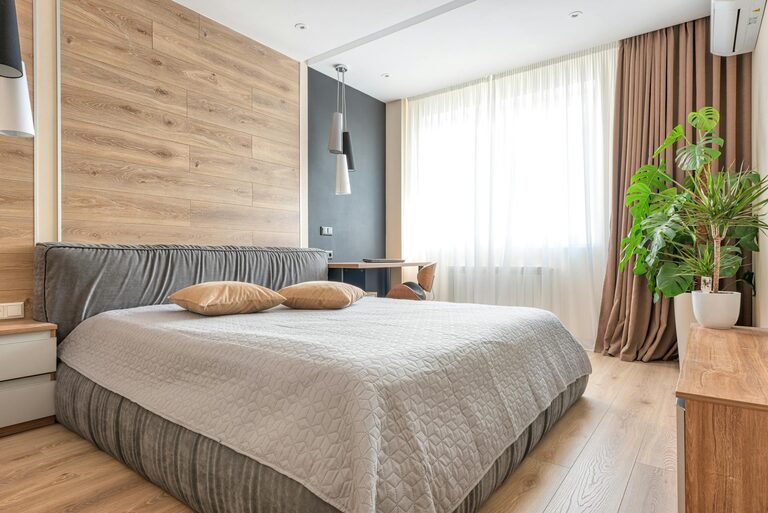
Bringing light into a dark room can completely change the feel of your space, making it more inviting, cheerful, and functional. Whether your room lacks natural light or just feels gloomy, there are plenty of quick and affordable tricks to brighten the area without a major renovation. In this post, we’ll explore practical ideas to easily illuminate your space using lighting, colors, furniture, and accessories.
Why Brightening a Dark Room Matters
A dark room can feel small, cold, or even depressing. Adequate lighting boosts mood, enhances productivity, and highlights your decor. Even in rooms with limited windows, thoughtful adjustments can dramatically improve brightness. Let’s dive into straightforward solutions you can try today.
Use Light Colors on Walls and Ceilings
Opt for White or Light Paint Shades
Painting your walls and ceiling in light colors reflects more light, instantly brightening a room. Shades like white, cream, soft pastels, or light grays act as a blank canvas that bounces both natural and artificial light around the space.
Avoid Dark or Saturated Colors
Dark colors absorb light, making rooms feel smaller and gloomier. If you like bold colors, consider using them as accents rather than covering an entire wall. For example, one feature wall or colorful accessories can add personality without darkening the room.
Maximize Natural Light
Keep Windows Unobstructed
Avoid heavy drapes or dark blinds that block sunlight. Instead, choose sheer curtains or light-filtering shades that allow light to pass through while maintaining privacy.
Use Mirrors Strategically
Mirrors reflect light back into the room, effectively doubling the brightness of natural light sources. Place a large mirror opposite or adjacent to a window for the best effect. Even smaller mirrors grouped in a gallery wall can help distribute light.
Enhance Artificial Lighting
Layer Different Light Sources
Combine overhead lighting, floor lamps, table lamps, and task lighting to create balanced illumination. Multiple sources reduce harsh shadows and brighten corners often missed by a single fixture.
Choose Bright, Warm Bulbs
Opt for LED bulbs with high lumen output and a warm white color temperature (2700-3000K) for a cozy yet bright atmosphere. Avoid bulbs that emit harsh blue tones, which can feel cold.
Add Light Fixtures in Dark Spots
Identify shadowy areas like hallways, closets, or corners, and add targeted lighting such as wall sconces or under-cabinet lights. These small additions make a surprising difference.
Incorporate Reflective and Light-Enhancing Decor
Select Furniture with Light Finishes
Light wood tones, white lacquer, glass, or metal pieces reflect light better than dark, matte furniture. Consider a glass coffee table or a metal-framed chair to create light-reflecting surfaces.
Use Glossy or Metallic Accessories
Decorate with items like shiny picture frames, metallic vases, or glossy ceramics. These elements catch and scatter light around the room.
Add Transparent or Light Fabrics
Choose curtains, upholstery, and throw pillows in lightweight, translucent fabrics that don’t trap light. Linen, cotton, or sheer materials work well.
Keep the Space Clean and Clutter-Free
A cluttered room can trap shadows and block light flow. Keeping surfaces tidy and organized lets light travel unhindered. Regularly declutter shelves, tables, and floors to maintain an open, bright feel.
Rearrange Furniture for Better Light Flow
Sometimes simply repositioning furniture can improve natural and artificial light distribution. Avoid placing large pieces directly in front of windows or lamps. Instead, keep pathways clear to let light bounce freely across the room.
Add Greenery to Bring Life and Light
Plants naturally brighten spaces and add fresh color. Choose plants with light-reflective leaves like snake plants or pothos. Place them near windows or where light reaches often to create a lively, illuminated corner.
Use Light-Colored Flooring or Rugs
If possible, opt for light wood, laminate, or tile flooring. If replacing floors isn’t an option, add light-colored rugs to brighten dark floors. Soft beige, white, or pastel rugs soften the space visually and reflect light upward.
Final Thoughts
Brightening a dark room doesn’t require expensive remodeling or bright lights blasting all day. Simple changes like repainting, adding mirrors, layering lighting, and choosing the right furnishings can transform your space into a warm, inviting haven. Try combining several of these ideas to make the most impact and enjoy a brighter, happier room.
With some creativity and a few small updates, you can create a well-lit, beautiful space that feels bigger, more open, and welcoming every day. Give these quick ideas a try and watch your dark room come to life!
